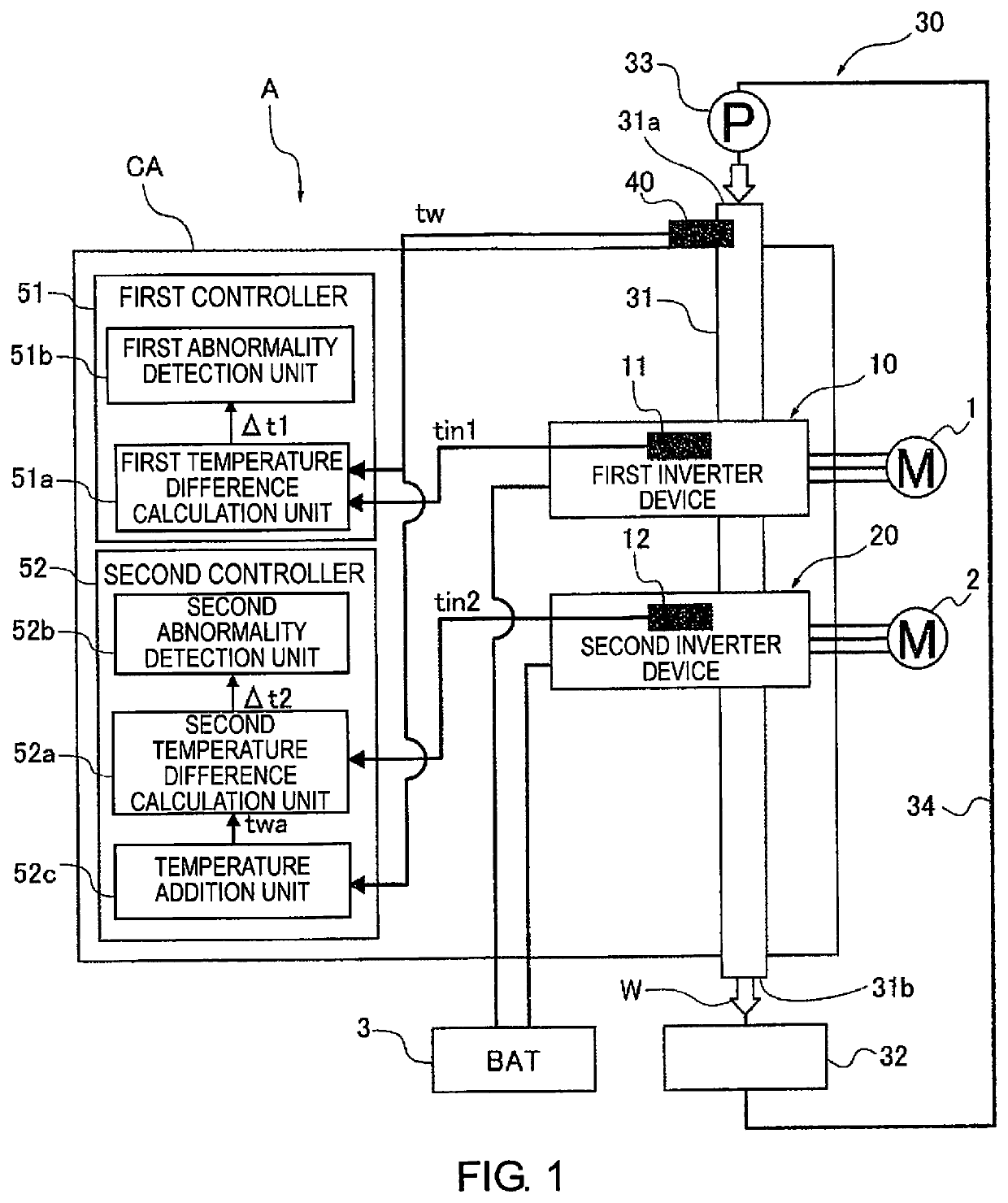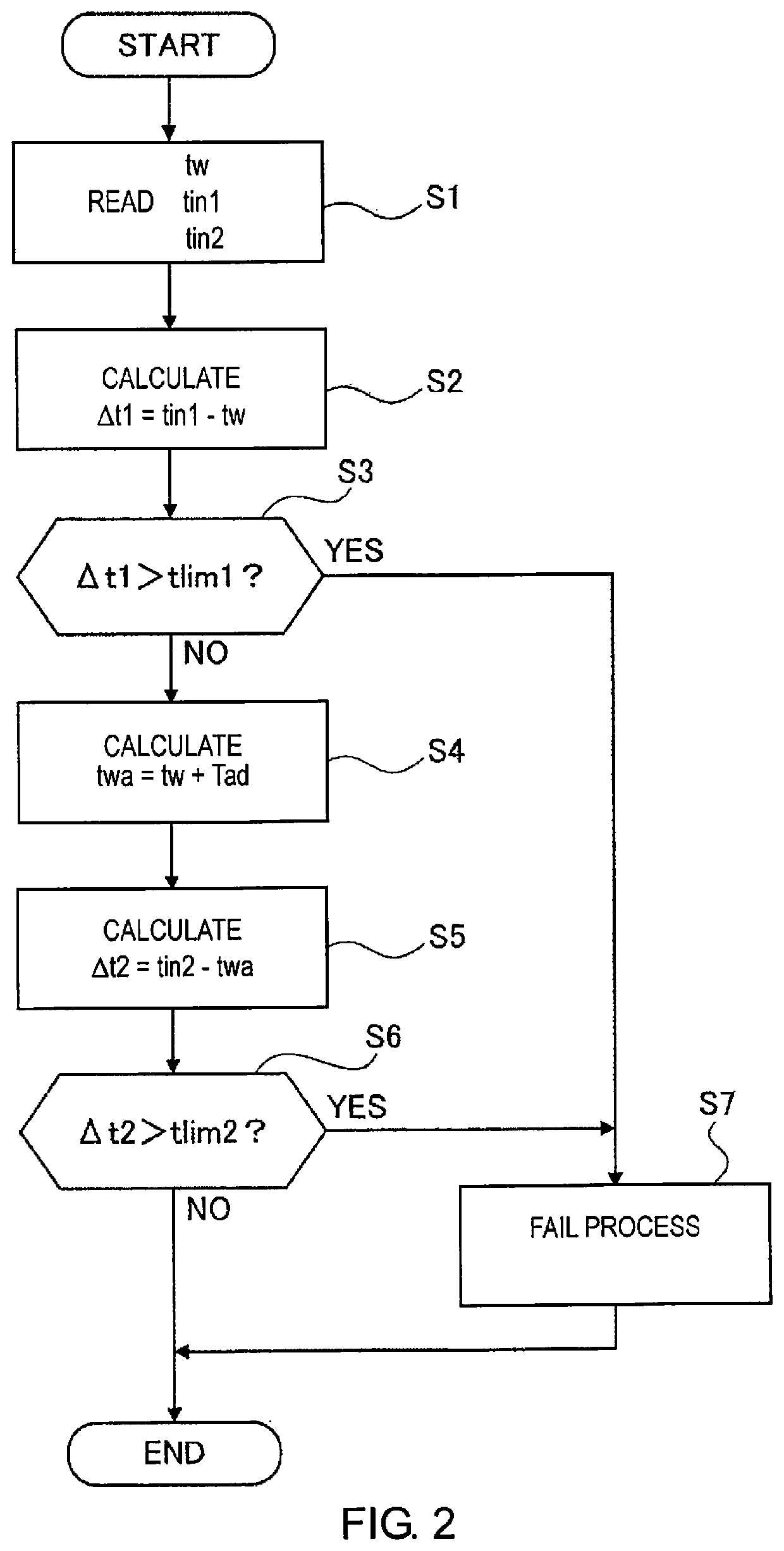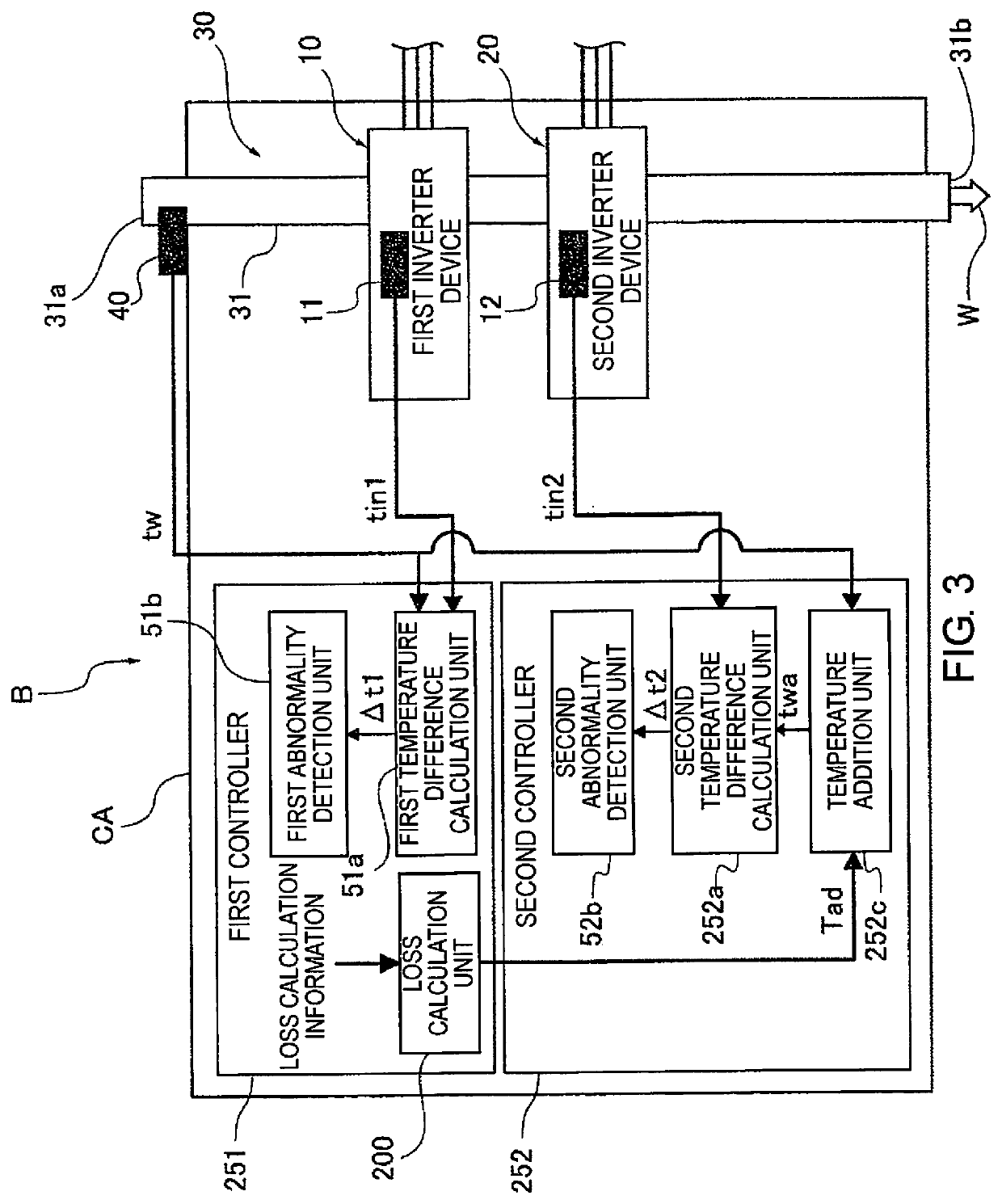Temperature abnormality detection method for power conversion apparatus, and temperature abnormality detection device for power conversion apparatus
- Summary
- Abstract
- Description
- Claims
- Application Information
AI Technical Summary
Benefits of technology
Problems solved by technology
Method used
Image
Examples
first embodiment
[0015]A temperature abnormality detection method and a power conversion apparatus for a power conversion apparatus of the first embodiment will be described below.
[0016]First, the configuration of a power conversion apparatus A to which the temperature abnormality detection method according to the first embodiment is applied will be described with reference to FIG. 1.
[0017]The power conversion apparatus A illustrated in FIG. 1 comprises a first inverter device (a power converter) 10 for driving a first power generation machine 1, and a second inverter device (a power converter) 20 for driving a second power generation machine 2.
[0018]The first power generation machine 1 and the second power generation machine 2 are mounted in an electric vehicle, a hybrid vehicle, or the like, which is not shown. The purposes of the two power generation machines 1, 2 are not particularly limited. For example, the two power generation machines 1, 2 can be used as drive sources for supplying driving f...
second embodiment
[0058]The second embodiment is an example in which the method of converting the loss component of the first inverter device 10 into temperature and adding the same to the cooling water temperature tw is different from that of the first embodiment. That is, in the second embodiment, a value calculated based on loss calculation information that includes semiconductor characteristics, the carrier frequency, and the current supplied to the first inverter device 10, is used as the temperature obtained by converting the loss component of the first inverter device 10.
[0059]FIG. 3 is an overall view schematically illustrating a power conversion apparatus B to which the temperature abnormality detection method of the second embodiment is applied. In the temperature addition unit 252c of the second controller 252 illustrated in FIG. 3, an addition value calculated by a loss calculation unit 200 provided in the first controller 251 is used as the addition value, which is the temperature of the...
third embodiment
[0075]The third embodiment is an example in which the method of converting the loss component of the first inverter device 10 into temperature and adding the same to the cooling water temperature tw to obtain the addition value Tad is different from those of the first and second embodiments.
[0076]That is, in the third embodiment, a value estimated based on the first temperature difference Δt1 between the temperature of the first inverter device 10 and the cooling water temperature tw is used as the addition value Tad that is added after the loss component of the first inverter device 10 is converted to temperature.
[0077]FIG. 4 is an overall view schematically illustrating a power conversion apparatus C to which the temperature abnormality detection method of the third embodiment is applied. The second temperature difference calculation unit 352a of the second controller 352 shown in FIG. 4 calculates a second temperature difference Δt2 between the added temperature twa3, estimated b...
PUM
 Login to View More
Login to View More Abstract
Description
Claims
Application Information
 Login to View More
Login to View More - Generate Ideas
- Intellectual Property
- Life Sciences
- Materials
- Tech Scout
- Unparalleled Data Quality
- Higher Quality Content
- 60% Fewer Hallucinations
Browse by: Latest US Patents, China's latest patents, Technical Efficacy Thesaurus, Application Domain, Technology Topic, Popular Technical Reports.
© 2025 PatSnap. All rights reserved.Legal|Privacy policy|Modern Slavery Act Transparency Statement|Sitemap|About US| Contact US: help@patsnap.com



